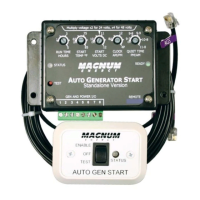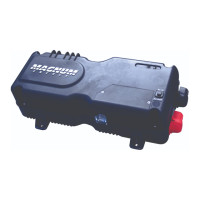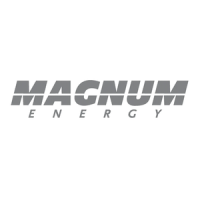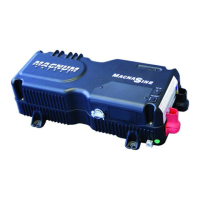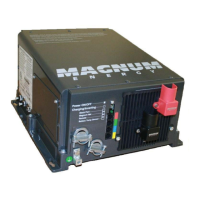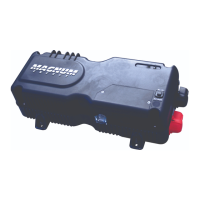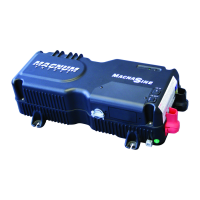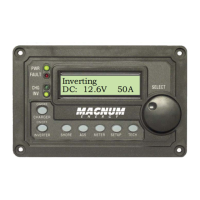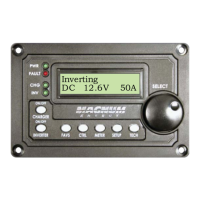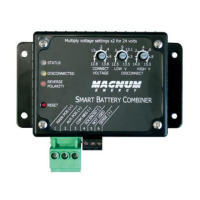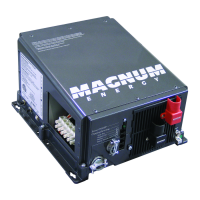
Do you have a question about the Magnum Energy ME Series and is the answer not in the manual?
| Output Waveform | Pure Sine Wave |
|---|---|
| Efficiency | Up to 94% |
| Type | Pure Sine Wave Inverter |
| Output Voltage | 120 VAC |
| Dimensions | Varies by model |
| Weight | Varies by model |
| Transfer Time | 16 ms |
| Protections | Overload, over temperature, low battery, high battery |
| Input Voltage | 12V, 24V, or 48V DC |
| THD | <3% |
| Battery Charger | Built-in (optional) |
Details key features and benefits of the ME Series inverter for RV use, highlighting ETL listing and UL458 compliance.
Lists the standard features of the ME Series inverter/charger, including power models, mounting options, and output types.
Explains the dual functionality of the inverter/charger: converting DC to AC for appliances and AC to DC for battery charging.
Discusses the range of appliances the inverter can power and factors affecting run time, including a table of power consumption.
Details the design, durability, and key features of the ME Series inverter/charger, including its components and ports.
Provides instructions for unpacking the inverter, inspecting for damage, and handling electrostatic sensitive devices.
Covers initial steps before installation, including reading warnings, proper lifting, and choosing locations for the inverter and batteries.
Lists the necessary hardware, materials, and tools required for the installation process.
Details wiring requirements for AC and DC connections, including grounding, wire types, and cable lengths for safe installation.
Covers torque specifications, AC main panel considerations, circuit protection, and safe wire routing practices.
Details the process for mounting the inverter, including positioning, clearance requirements, and securing methods.
Provides guidelines for installing batteries, including type, placement, ventilation, and securing them properly.
Guides the selection of correct battery cables, including sizing, color coding, and required lug types for proper connection.
Details DC wiring procedures, safety precautions, grounding requirements, and routing for negative and positive cables.
Explains battery wiring, including series and parallel connections, hardware installation, and safety notes for connecting batteries.
Details series and series/parallel battery connection methods for achieving desired voltage and capacity.
Explains the installation and rating requirements for the DC fuse block or circuit breaker for system protection.
Covers AC wiring procedures, safety precautions, recommended wire sizes, circuit protection, and routing for shore power and generator inputs.
Details wiring the inverter's AC input and output, torque requirements, and final checks before operation.
Covers installation of optional accessories like battery sensors and remote controls.
Guides the initial start-up and testing process, including connecting batteries, verifying connections, and checking system operation.
Explains how to configure inverter/charger settings using the remote control, including battery parameters and charge rates.
Explains the different operating modes: Inverter, AC Shore Power, and the stages of battery charging (Bulk, Absorption, Float, Battery Saver).
Describes fault and alarm conditions such as Low Battery, High Battery, Overload, and Overtemperature, and their causes.
Provides a basic troubleshooting guide for common inverter issues, including symptoms, possible causes, and recommended solutions.
Outlines recommended maintenance steps for the inverter and batteries for optimal performance and longevity.
Provides procedures for properly shutting down or configuring the system for seasonal storage, focusing on battery maintenance.
